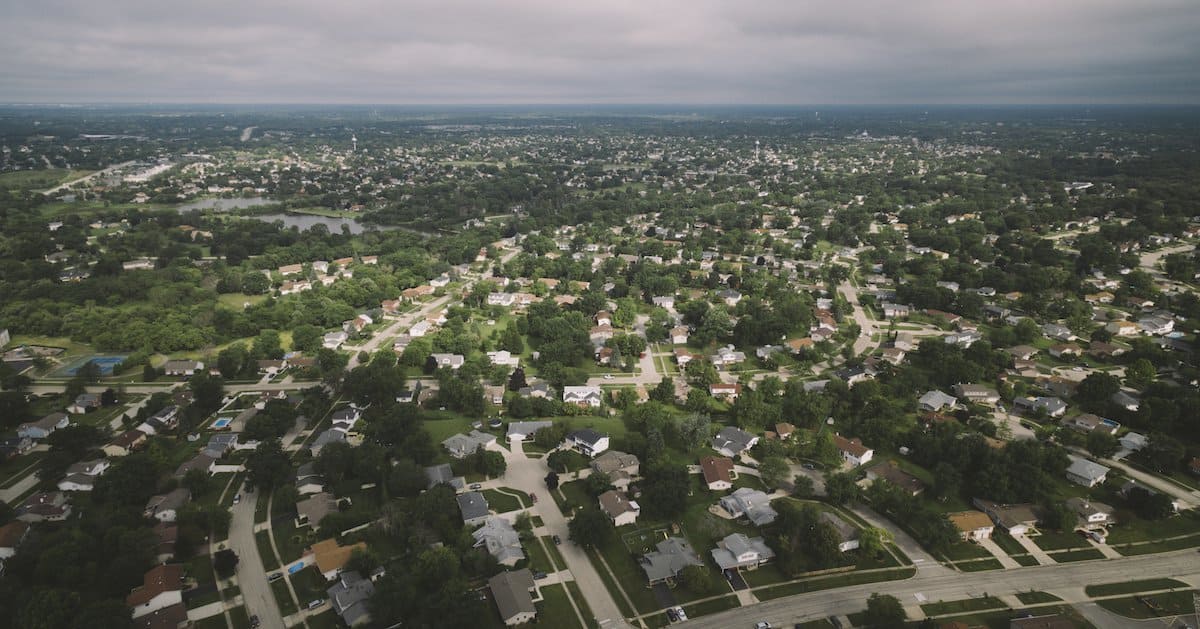Let me begin with a question: Do you shop at the grocery store closest to your home, or at the grocery store you like best, even if it’s a little farther away? If you are like my family and live in the endless suburban sprawl that surrounds so many of today’s cities, you probably drive past several perfectly good grocery stores to go to one you prefer—one with the better selection of produce or the great coffee shop or that favorite generic brand. My guess is that you also go to a doctor you are comfortable with rather than one who is just around the corner, and that you go either to Lowe’s or Home Depot not on the basis of which is closer, but on the basis of which one you like best. These are the luxuries of modern-day suburbia, though we are so accustomed to them we hardly think it remarkable that the whole city is our neighborhood.
It was not always this way. Proximity was once very important. There were neighborhood grocers, town doctors, and that single mom and pop hardware shop. We went where we could reach, where we could walk. But as suburbs have sprawled ever wider, and as cars have multiplied, proximity has become less of a determining factor. Here in my suburb of Toronto, we all drive everywhere, to all of our favorite spots. We drive past Sam’s Club to get to Costco, we drive past Walmart to get to Target, we drive past Wendy’s to get to McDonald’s. The neighborhood grocer is a vestige of the past, at least in suburbia, as is the neighborhood diner, toy store, and book store. So, too, is the neighborhood church—the community church.
Here in the suburbs, church is one more thing we drive to and choose according to preference rather than proximity.
Let me ask another question: How many suburbanites do you know who go to church within walking distance of their home? How many do you know who attend the closest church? I suspect it is quite a short list. Here in the suburbs, church is one more thing we drive to and choose according to preference rather than proximity. I think it’s time we reconcile ourselves to this as a fact of modern, suburban life.
My family lives thirty-four kilometers (twenty-one miles) from Grace Fellowship Church. That’s a twenty-five minute drive in clear traffic, and an hour-long drive at rush hour. It seems strange that we burn up all that fuel and drive past three or four perfectly good churches to attend one we prefer. But that’s suburban life, and we are far from the only members of our church who make the commute. In fact, I can think of only two or three families who can comfortably walk to the church on a Sunday morning. The rest of us drive, some from the east side, some from the west, some from the far north and some from downtown. We all converge on that little Christian school gym and worship together as a church family. Meanwhile, people are zipping past us, heading to churches elsewhere in the city.
They have their reasons for making their drive, and so do we. In our case, it was a matter of timing. My family found our church eleven years ago, just at the time we moved into a new home. Had it happened any other way, we probably would have found a church closer to home or a home closer to church. But we simultaneously found the home we love and the church we love and haven’t been convinced we ought to leave either one.
We’ve sometimes felt like we are doing something wrong, that we owe it to our town to settle into a church near our home. Certainly, there are elements of a neighborhood church that sound pure and appealing. But I am increasingly convinced it doesn’t matter as much as it might have twenty or thirty years ago. Ironically, if we attended a church in our neighborhood, it would be full of people from other neighborhoods, and would be local only to us. North American suburbia has uncoupled geography from vocation, education, banking, shopping, and nearly everything else, so it’s not a stretch to see it also uncoupling geography from local church community. Just as it isn’t necessarily beneficial to work at the nearest office tower or make deposits at the closest bank, it isn’t necessarily beneficial to worship at the closest church or detrimental to worship at one farther away. Here in suburbia we have structured our lives and shifted our expectations to account for driving. Just as we are content to drive to shop, we are content to drive to worship. Now, instead of worshipping as a local community, we worship as commuters. And that’s okay.
It’s okay for our family and our congregation, at least, though in many ways we have had to adapt. As a family, we have reconciled ourselves to being all-in at our church even with the longer drive. We do not use the distance as an excuse to miss or to shirk our responsibilities. As a church, we have adjusted our weekly schedule to account for the many members who have to navigate Toronto traffic. We have also shifted the focus of our evangelism so that instead of reaching out to people in close proximity to the church building, we reach out to people in close proximity to church members—friends, neighbors, colleagues. After all, they too drive everywhere to get to everything. Why would it now faze them to drive to church? We have reconciled ourselves to being a church that draws from a wide geographic area and are now trying to do that well. We have reconciled ourselves to seeing the whole city as our community, not just the neighborhood around our building.
And we are not alone. In suburbia, or North American suburbia at any rate, it seems the era of the community church is giving way to the era of the commuter church. It’s a new challenge, but one we can do well as we identify it and embrace it.
There’s much more I’d like to say about this at another time. I’d like to comment on the kinds of preferences we invoke as we select churches. I’d like to comment on the irony of a church trying to reach its local community when no one from that community attends the church. I’d like to comment on churches in other contexts where geography still is a determining factor. But for today I will leave my thoughts as they are.










